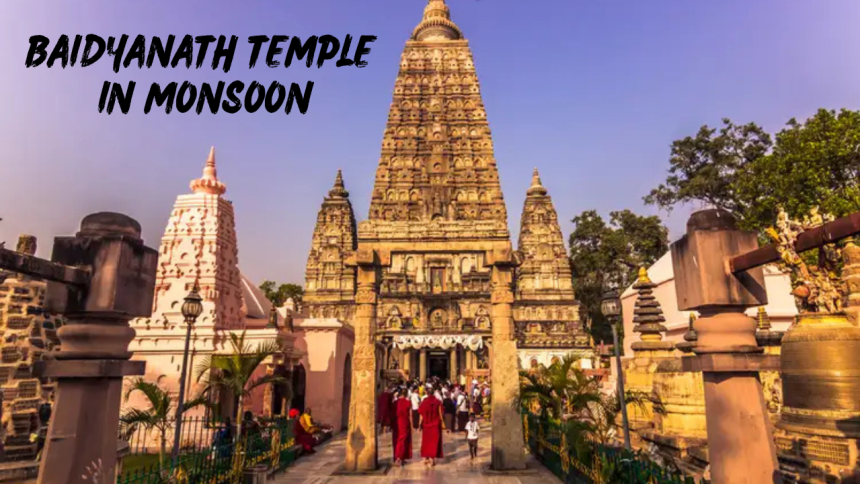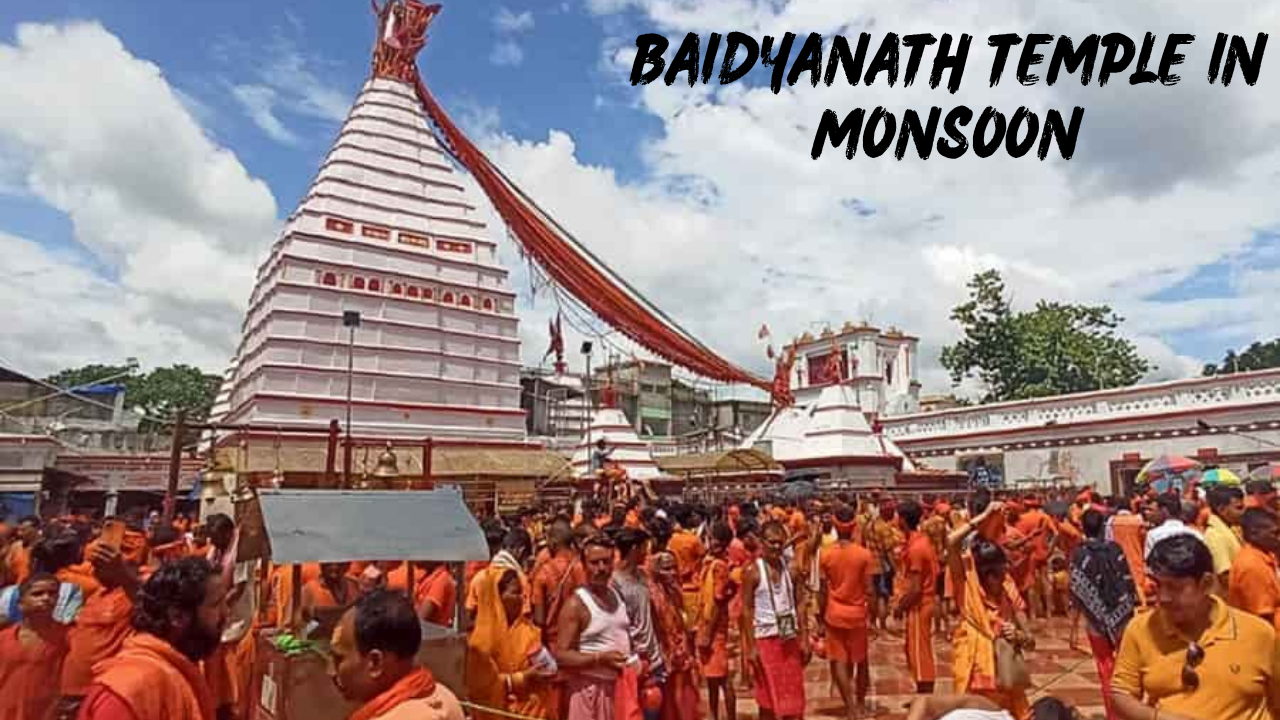Every year, when the storm clouds roll over eastern India and the discuss turns dim with the fragrance of damp soil, something enchanted mixes in the hearts of millions of lovers. It’s not fair the rain it’s the call of Baidyanath Temple in Monsoon, one of the twelve venerated Jyotirlingas of Master Shiva, settled in Deoghar, Jharkhand.
But here’s the bend it’s amid the sacrosanct month of Shravan (July–August) that Baidyanath Temple in Monsoon genuinely comes lively. It changes from a heavenly holy place into a effective otherworldly magnet pulling travelers, called Kanwariyas, from each corner of India.
Ready to walk this travel with us? Snatch your umbrella (and perhaps your confidence) we’re going on a rainstorm journey that’s not fair otherworldly but too drenched in wealthy culture and devotion.
What Makes Baidyanath Temple in Monsoon So Special?
Let’s begin at the heart of the story.
Baidyanath Temple in Monsoon, or Baba Dham, isn’t fair another put of adore. It’s accepted to house the Jyotirlinga a appearance of Ruler Shiva that’s said to have mending powers. The word Baidyanath itself implies “Lord of Physicians,” and genuine to its title, the sanctuary is considered a put of otherworldly and physical healing.
The Otherworldly Buzz of the Shravan Month
Shravan is no conventional month in the Hindu calendar. It’s when Ruler Shiva is adored with unmatched energy. Lovers quick, chant mantras, and walk unshod for miles all to offer heavenly Ganga water to the deity.
Now envision this more than 7 to 8 million individuals strolling from Sultanganj (in Bihar) to Deoghar, carrying water from the Ganga in copper pots tied to bamboo slings called kanwars. It’s a 105-km travel. Correct, on foot. In the rain.
Why? Since it’s not fair a walk it’s a affirmation of devotion.
The Kanwar Yatra: A Storm Journey Like No Other
Ever seen a ocean of orange-clad travelers chanting “Bol Bam” through elusive mud streets and woodland ways? That’s the Kanwar Yatra, and it’s not for the faint-hearted.
During Shravan, Kanwariyas carry Ganga jal (heavenly water) on their shoulders without letting the pots touch the ground a sign of faithful commitment. They walk night and day, through rainstorms and restless extends, to offer this water at Baidyanath Temple in Monsoon.
It’s less of a journey and more of a otherworldly marathon.
Monsoon Includes to the Enchantment (and the Challenge)
Now, let’s conversation weather.
You’d think a journey in the pouring rain might be hopeless, but the storm intensifies the otherworldly vitality. Thunder in the sky, the scent of damp soil, cadenced chants in the discuss it all includes up to an environment that’s nothing brief of electric.
But hello, don’t disregard the dangerous streets, swollen waterways, and eccentric deluges. It’s nature’s way of testing your determination.
Inside the Sanctuary: The Last Offering
After days of strolling, when you at last reach the sanctuary entryways of Baidyanath Dham, there’s a effective hush that welcomes you like the calm in the eye of a storm.
Devotees line up for hours to pour their Ganga water over the Shivling, imploring for great wellbeing, peace, and freedom. It’s more than a custom; it’s a minute of change. You take off something behind and take something interminable with you.
Rituals and Conventions You Can’t Miss
Apart from the water advertising, Shravan at Baidyanath comes with an whole lineup of rituals:
Abhishek: The sacrosanct shower of the Shivling with drain, nectar, curd, and water.
Rudrabhishek: A uncommon Vedic chant-led offering.
Maha Aarti: A mesmerizing fire ceremony held daily.
Prasad Conveyance: The sweet pedas of Deoghar are as otherworldly as they are delicious.
The Vibe Around Deoghar Amid Shravan
Picture this the whole town of Deoghar buzzing like a mammoth otherworldly carnival. From street-side slows down offering saffron dress and home grown oils to local people advertising nourishment and protect to travelers, the town gets to be one mammoth community of faith.
Music, dedication, color, chaos, and calm it’s all there, woven together like a storm raga.
Tips if You’re Arranging Your Possess Shravan Yatra
Thinking of going this year? Here are a few inviting tips:
Train in development: This walk is no joke. A few travelers prep months ahead.
Pack light but keen: Waterproof dress, a burn, first-aid, and glucose tablets are a must.
Respect the pledge: Numerous Kanwariyas watch strict rules no liquor, no meat, and total celibacy.
Embrace the travel: It’s not approximately coming to rapidly; it’s approximately surrendering along the way.
Baidyanath Sanctuary and Its Association to Ravana
Did you know the sanctuary has a legendary turn too?
Legend says Ravana, the lord of Lanka and a sincere Shiva admirer, advertised his ten heads here to if it’s not too much trouble the Ruler. Inspired by his commitment, Shiva concurred to dwell here as Vaidyanath (healer) making the put a image of preeminent give up and divine acceptance.
Why Rainstorm is the Best Time to Visit Baidyanath Temple
Sure, the Baidyanath Temple in Monsoon is open all year, but Shravan in the rainstorm is when it genuinely stirs. It’s when you see the sanctuary not fair as stone and structure, but as a living, breathing vitality center.
The rainstorm gets to be more than a season it turns into a organize for confidence, continuance, and transformation.
Read More: Sattvic vs Vegan: What’s the Real Difference?
Conclusion
The Baidyanath Temple in Monsoon in storm isn’t fair a goal; it’s a travel into your possess soul. The rain tests your resolve, the way lowers your inner self, and the sanctuary fills your heart.
Whether you walk as a Kanwariya or visit as a quiet admirer, the vitality of Baidyanath amid Shravan is something you don’t fair witness you feel it, profound in your bones.









